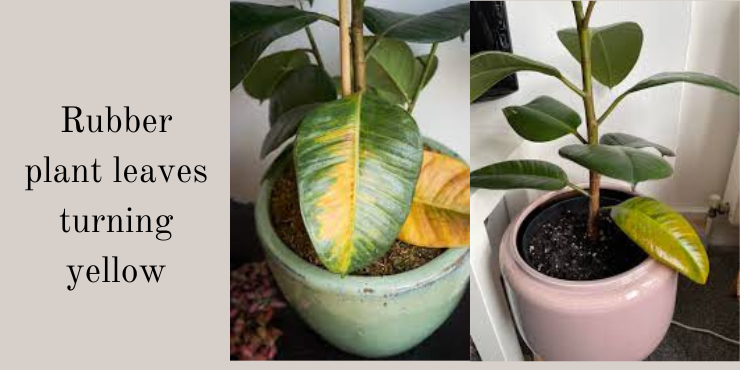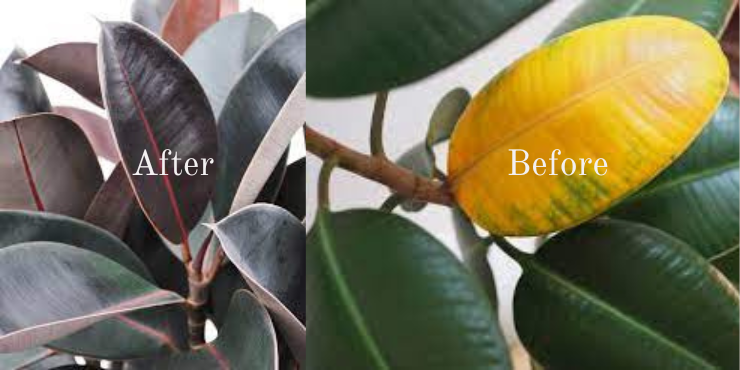Introduction:
Rubber plants (Ficus elastica) are cherished for their lush green foliage and air-purifying qualities, making them a popular choice for indoor plant enthusiasts. However, if you’ve noticed the leaves of your rubber plant turning yellow, it can be a cause for concern. In this comprehensive guide, we’ll delve into the various factors that can contribute to yellowing leaves and provide effective solutions to restore your rubber plant’s health.
- Watering Practices:
One of the most common reasons for rubber plant leaves turning yellow is improper watering. Overwatering or underwatering can both lead to leaf discoloration. Rubber plants prefer slightly moist soil but can suffer if the roots sit in waterlogged conditions. On the other hand, allowing the soil to dry out completely can stress the plant.
Solution: Establish a consistent watering routine, allowing the top inch of the soil to dry out between watering. Ensure proper drainage and choose a well-draining potting mix.
- Lighting Conditions:
Rubber plants thrive in bright, indirect light. Inadequate light can lead to yellowing leaves, especially for plants placed in low-light environments. Conversely, excessive sunlight can scorch the leaves, causing them to turn yellow and brown.
Solution: Place your rubber plant in a location with bright, filtered light. Rotate the plant occasionally to ensure even exposure. If the plant is receiving too much direct sunlight, consider moving it to a spot with gentler light or filtering the light with sheer curtains.
- Nutrient Deficiency:
Yellowing leaves can also be a sign of nutrient deficiencies, particularly nitrogen. Rubber plants require a balanced fertilizer to support healthy growth. A lack of essential nutrients can manifest as yellowing leaves, starting from the bottom of the plant and progressing upward.
Solution: Feed your rubber plant with a balanced, water-soluble fertilizer during the growing season (spring and summer). Follow the recommended dosage on the fertilizer packaging, and avoid over-fertilizing, as this can lead to salt build-up in the soil.
- Humidity Levels:
Rubber plants are native to tropical regions and thrive in high humidity. Low humidity levels, common in indoor environments, can cause the plant to lose moisture through transpiration, leading to yellowing leaves.
Solution: Increase humidity around your rubber plant by misting its leaves regularly or placing a humidifier nearby. Grouping plants together can also create a microclimate with higher humidity.
- Pests and Diseases:
Pests, such as spider mites and scale insects, can infest rubber plants, causing damage to the foliage. Additionally, fungal diseases like root rot can affect the plant’s overall health.
Solution: Inspect your rubber plant regularly for signs of pests. If detected, treat with insecticidal soap or neem oil. Ensure proper ventilation to reduce the risk of fungal diseases, and adjust watering practices to prevent root rot.
Understanding these potential causes is the first step towards nursing your rubber plant back to health. By addressing these factors and implementing appropriate remedies, you can bid farewell to yellowing leaves and revel in the vibrancy of your flourishing rubber plant
Conclusion:
Caring for a rubber plant requires attention to various factors, and addressing the specific issues causing yellowing leaves is crucial for its well-being. By implementing the solutions outlined in this comprehensive guide, you can restore your rubber plant to its vibrant, green glory and ensure its continued growth and vitality. Remember to monitor your plant regularly, providing the care it needs to thrive in your indoor space.



